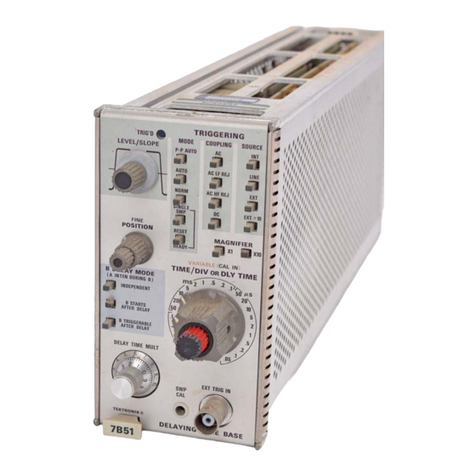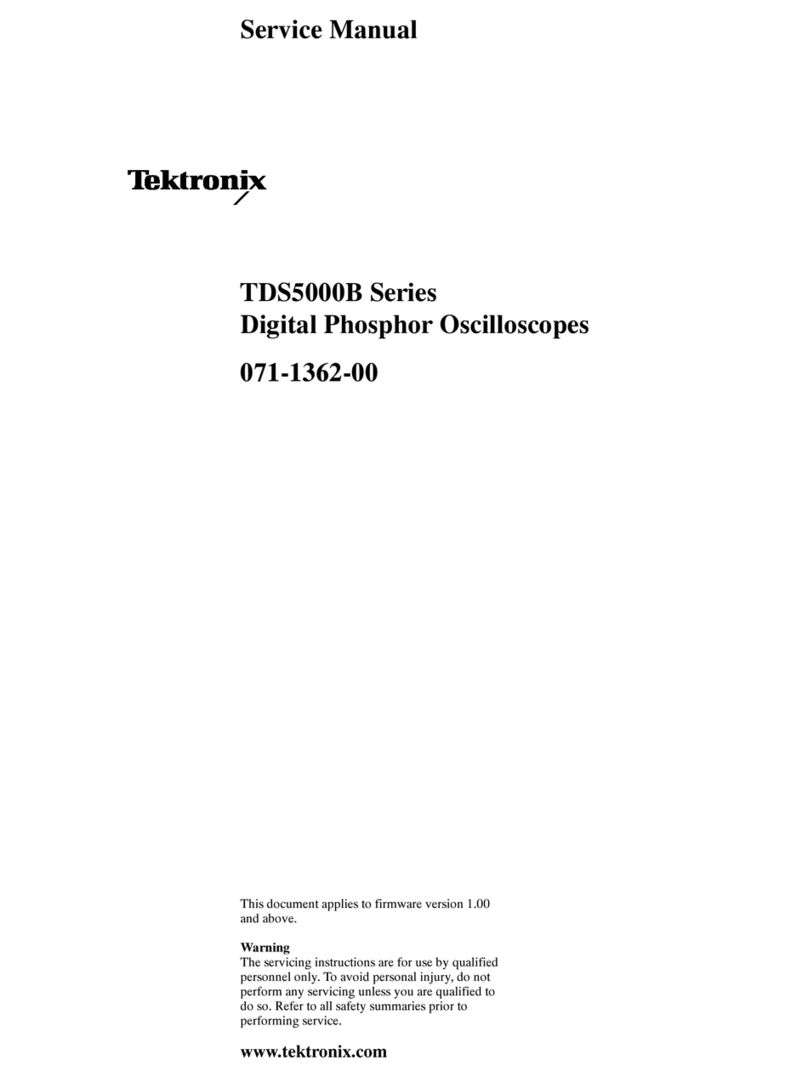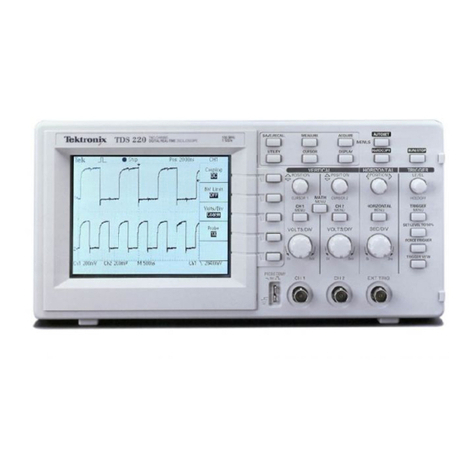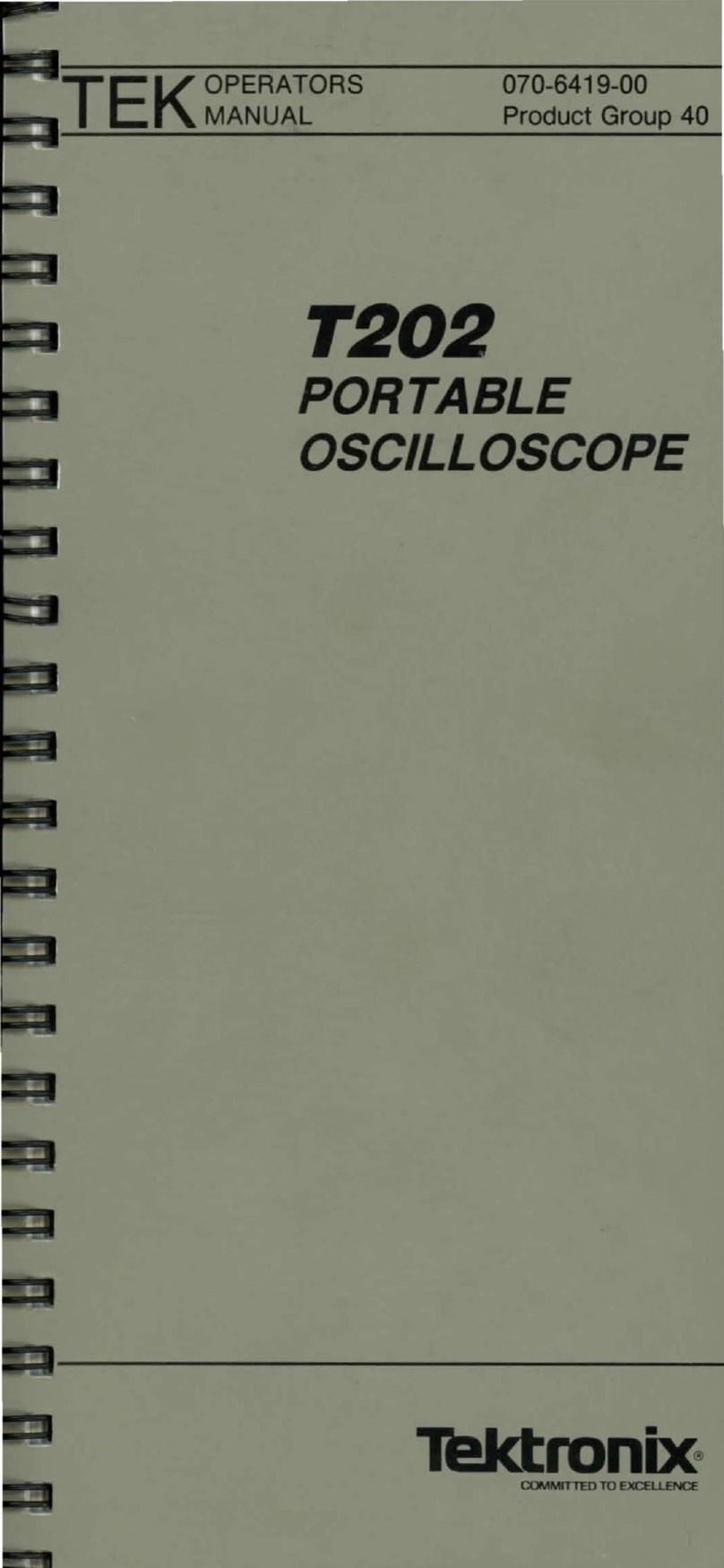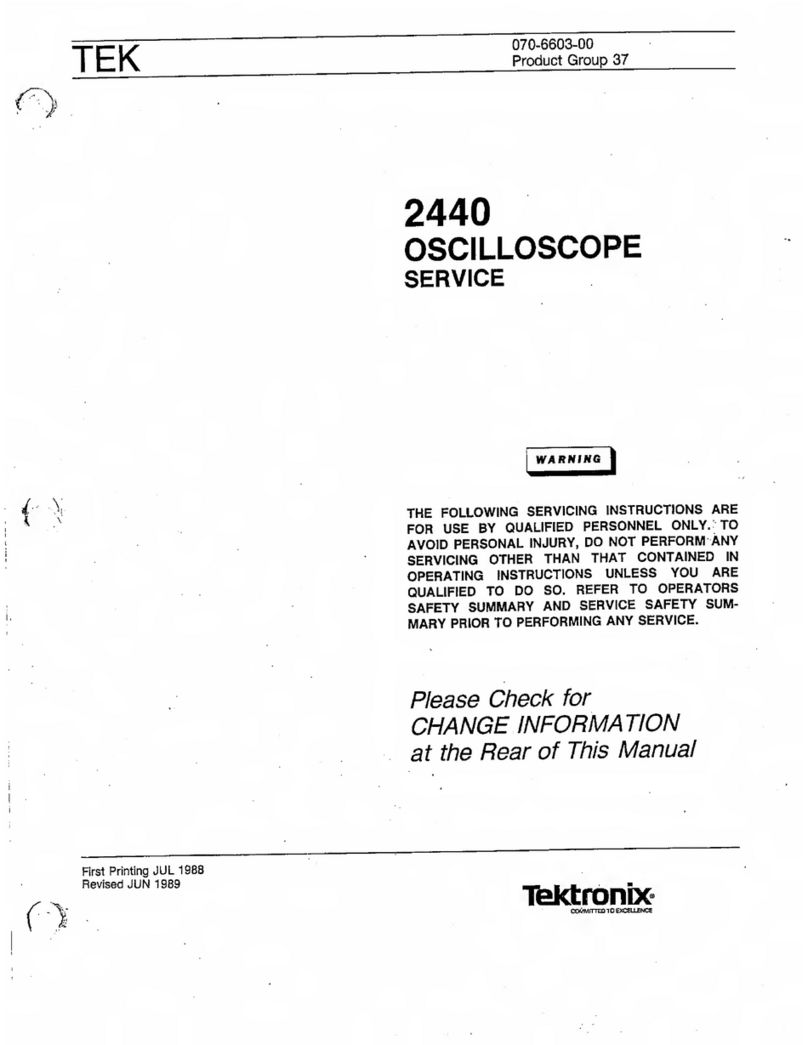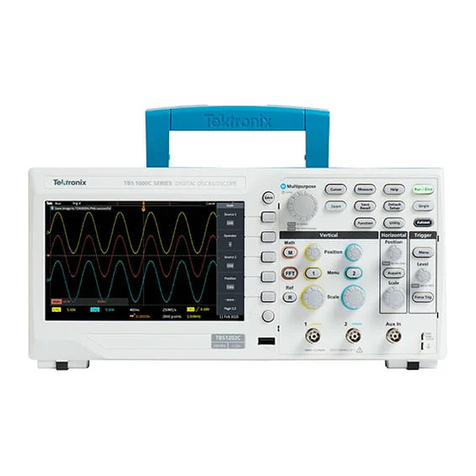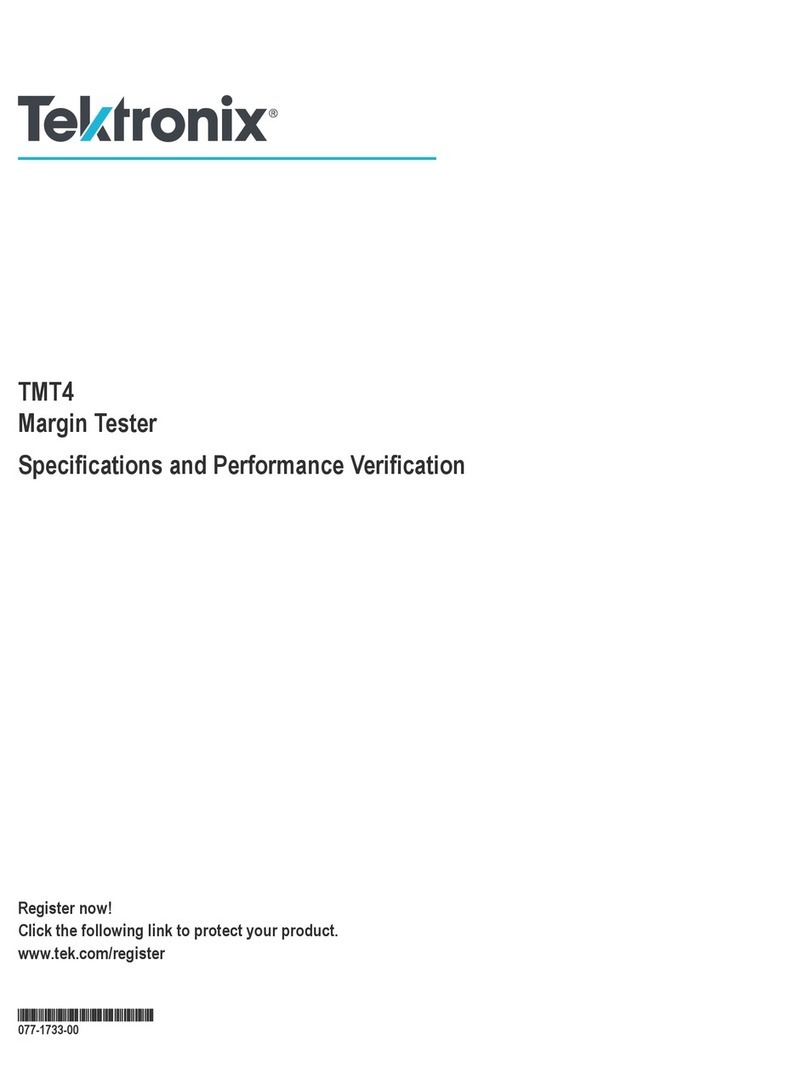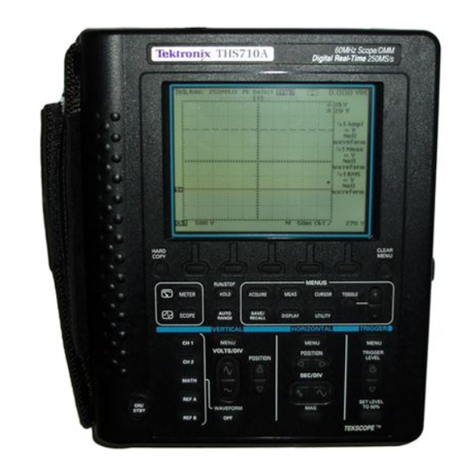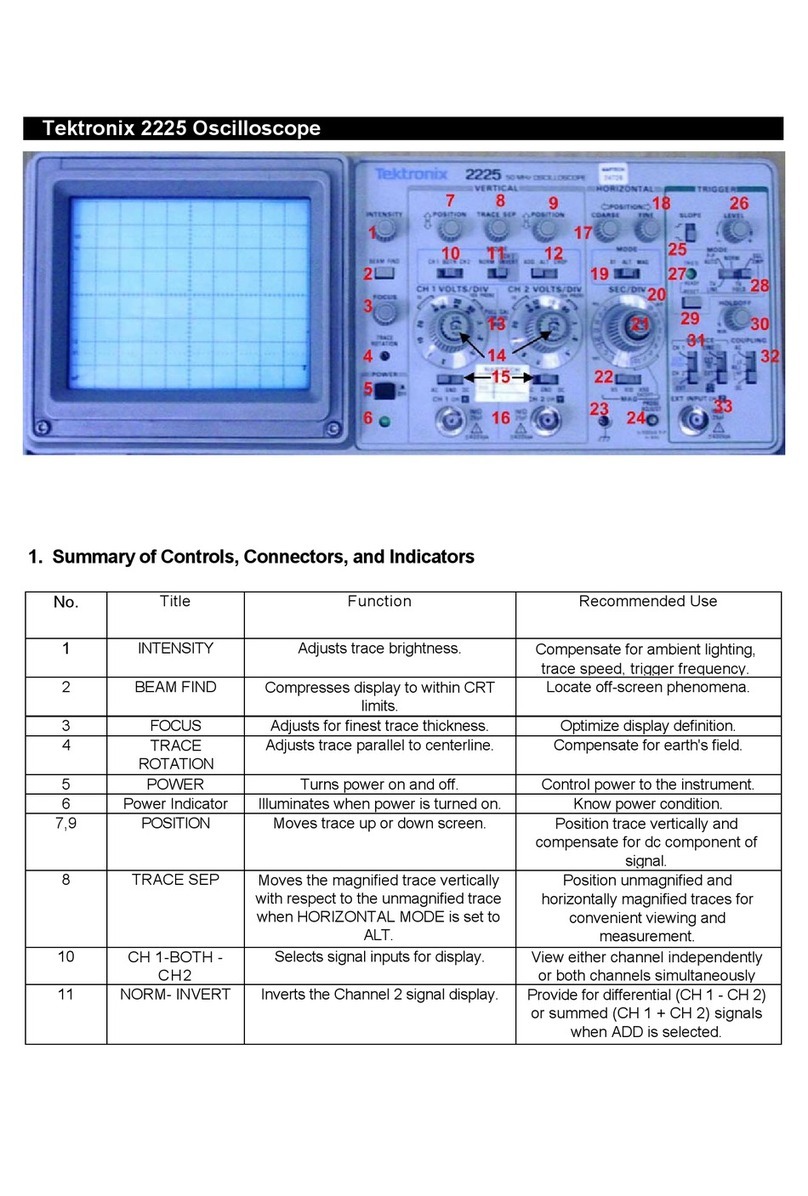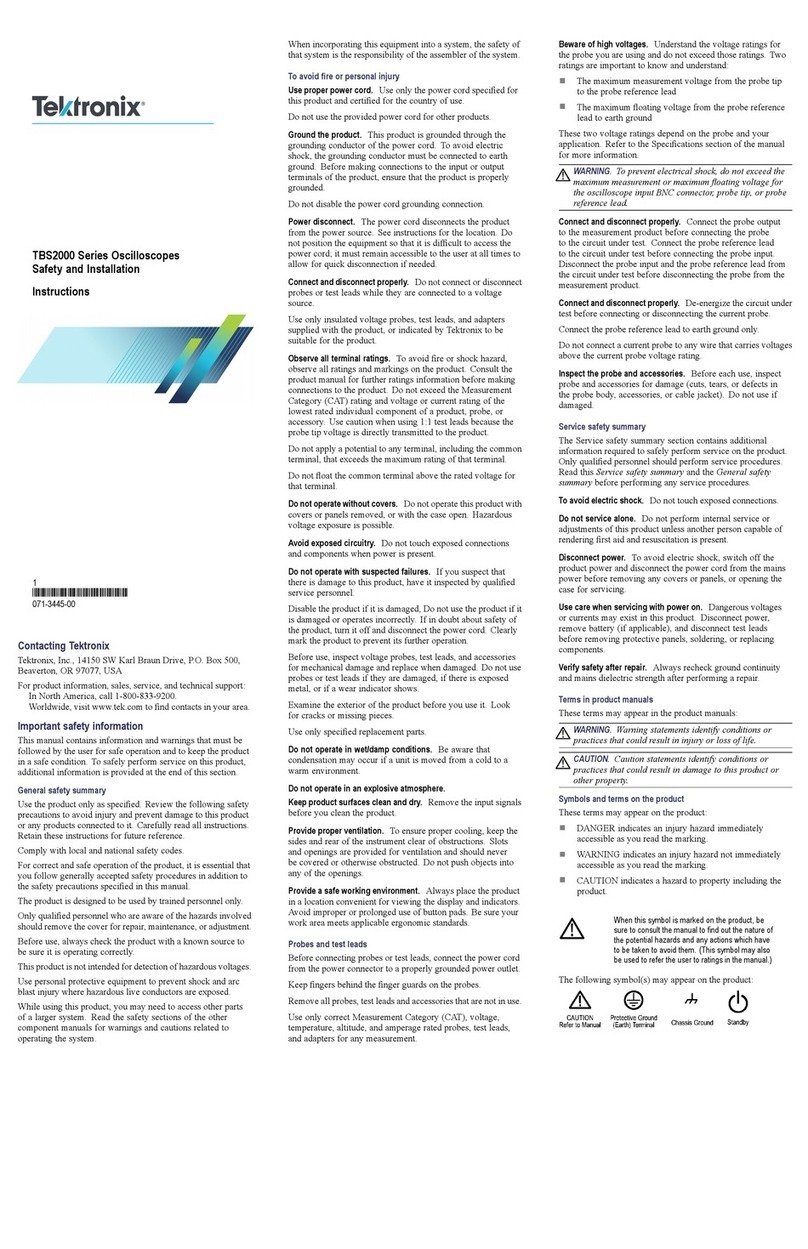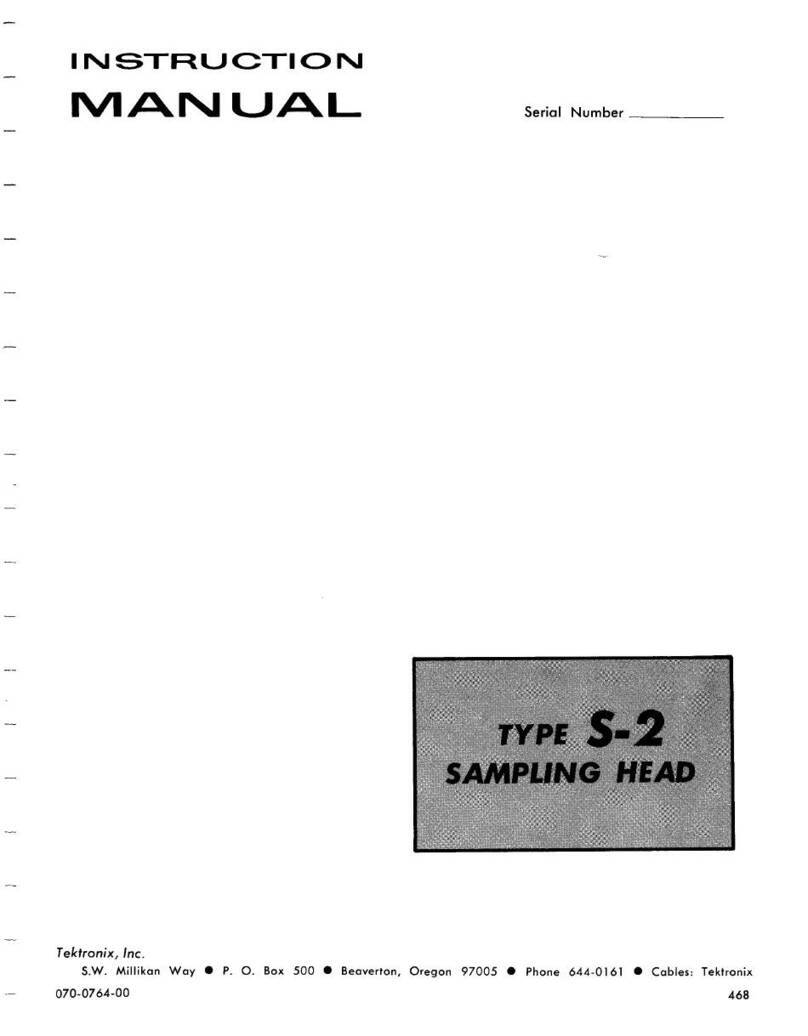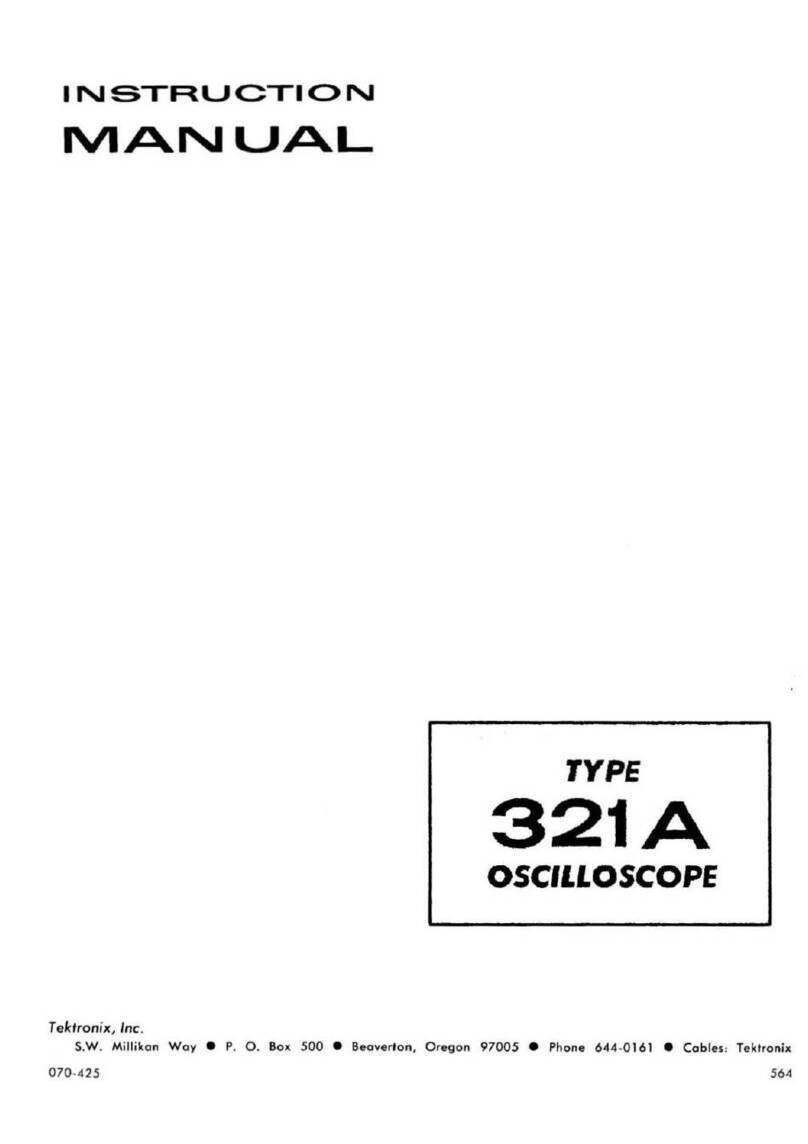OPER TING INFORM TION
ND SPECIFIC TIONS
Section 1—221 Service
INTRODUCTION
The 221 Oscilloscope is a sin le-channel, five me ahertz
portable instrument usin all solid state and inte rated
circuit components (except the crt). The instrument is
mechanically constructed to withstand the shock, vibration,
and other extremes associated with portability.
The dc to five me ahertz vertical system provides verti
cal deflection factors from five millivolts to 100 volts/
division at the tip of the inte ral hi h-impedance probe.
The tri er circuit provides stable tri erin over the full
ran e of vertical frequency response.
The horizontal deflection system provides calibrated
sweep rates from 200 milliseconds to one microsecond/
division. A sweep variable decreases calibrated sweep rates
by about 2.5:1, resultin in a minimum uncalibrated sweep
rate of about 0.5 second/division. A calibrated X10 sweep
ma nifier increases the sweep to at least 0.1 microsecond/
division. In addition, horizontal amplifier operation pro
vides a horizontal deflection factor of one volt/division for
X-Y operation. The cathode-ray tube has a six by ten
division raticule (each division equals approximately
0.2 inch).
The 221 is operated either from ac line volta e or from
internal rechar eable batteries. The internal batteries are
rechar ed from the ac power line by the inte ral battery
char er (with the instrument on or off).
This instrument will meet the followin electrical char
acteristics after complete instrument calibration. These
characteristics apply over an ambient temperature ran e of
—15°C to +55°C (+5°F to +131°F) when battery operated,
or 0°C to +40°C (+32°F to +104°F) when the instrument is
connected to ac line volta e. Warmup time for iven
accuracies is five minutes.
ELECTRIC L
The 221 oscilloscope will meet the followin electrical
specifications after calibration. The check portion of the
calibration procedure provides a convenient method of
checkin instrument performance without makin internal
checks or adjustments.
The followin electrical characteristics apply over an
ambient temperature ran e of —15°C to +55°C (+5°F to
+131°F) battery operation, or 0°C to +40°C (32°F to
+104°F) for line volta e operation.
Vertical Deflection System
Calibrated Ran e: five millivolts to 100 volts/division in
14 steps.
Accuracy: within 3% with VAR VOLTS/DIV in CAL
detent position.
Uncalibrated VAR VOLTS/DIV ran e: Continuously
variable, 3:1 minimum.
Bandwidth (with six division reference): to at least
five me ahertz (—3 dB point), with VARIABLE VOLTS/
DIV in CAL position.
Step Response: 70 nanoseconds or less.
Aberrations: +5%, —5%, 5% peak to peak total.
Input Resistance: 1 me ohm.
Input Capacitance: Approximately 29 picofarads.
Maximum Safe Input Volta e: 600 volts (dc + peak ac),
600 volts peak-to-peak ac.
Triggering
Tri er Sensitivity:
INT: 0.5 divisions from two hertz to one me ahertz,
increasin to 1 division at five me ahertz.
EXT: 0.5 volt from dc to one me ahertz; increasin
to 1 volt at 5 me ahertz.
AUTO PRESET: Tri ered at preset level on positive
slope of waveform.
Display Jitter: 20 nanoseconds or less.
EXT TRIGGER:
Input Resistance: Approximately one me ohm.
Input Capacitance: Approximately 30 picofarads.
Maximum Usable Input Volta e: Three volts (dc +
peak ac), six volts peak-to-peak ac (five me ahertz of less).
REV. B, FEB. 1976 1-1


